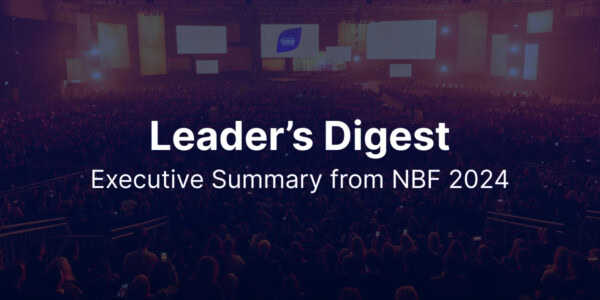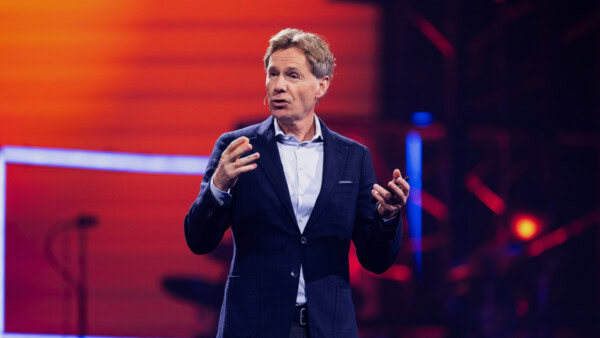16Oct2024
Anyone who has held leadership positions has likely noticed that some team members work hard and achieve ordinary results, while others, perhaps working no harder, have an extraordinary impact. Liz Wiseman, a leadership expert and author of Multipliers and Impact Players, conducted an investigation to uncover what separates position holders from difference makers. She shared her findings and offered valuable, practical advice during her VIP keynote at Nordic Business Forum 2024.
Building on the discussion from her previous session, where she explored how Multiplier leaders amplify the intelligence of their teams while Diminishers stifle potential, Liz delved deeper into how individuals—not just leaders—can make a significant difference in their workplaces by adopting the mindset of high-impact individuals — the “Impact Players.”
The Impact Player Difference
In her research, Liz and her team interviewed 170 leaders across nine top companies, asking them to identify two types of employees: those who performed well—the “ordinary contributors”—and those who made an extraordinary impact. The findings were striking: Impact Players delivered 3.5 times more value than their peers.
Liz emphasized that this study did not examine high vs. low performers but rather fine distinctions between people who were competent and those whose work had far-reaching effects. As she put it,
“These ordinary contributors were stellar employees in ordinary times, but the Impact Players thrived in ambiguity and complexity.”
Five Key Situations That Define Impact Players
Liz identified five specific workplace situations where Impact Players stand out:
1. Messy Problems: These are issues where ownership is unclear, and responsibilities fall between the cracks. Ordinary contributors tend to stay within their defined roles, while Impact Players step up to solve these problems, even when it’s not “their job.” Liz illustrated this with a story about Jojo Mirador, a surgical tech who didn’t just perform his duties—he anticipated the needs of surgeons, ensuring every operation ran smoothly.
2. Unclear Roles: When roles and leadership are ambiguous, contributors wait for direction, while Impact Players instinctively take the lead without being asked. Their leadership is fluid, stepping up when needed and stepping back once their job is done, much like the way geese rotate leadership during flight.
3. Unforeseen Obstacles: When unexpected challenges arise, contributors often escalate the problem to those in authority. In contrast, Impact Players take ownership, finding solutions and pushing through obstacles with a sense of determination. Liz described this as having a “finishing gene”—the ability to see a project through to the end, ensuring success for the whole team.
4. Moving Targets: In rapidly changing environments, contributors stick to what they know, while Impact Players adapt quickly. They remain flexible, adjusting their approach and asking the right questions to keep pace with shifting goals.
5. Unrelenting Demands: Faced with increasing workloads, contributors may contribute but make work harder for others through inefficiency. Impact Players, on the other hand, find ways to make work lighter for themselves and their colleagues, bringing levity and a focus on simplicity to the task at hand.
Liz summed up these differences with a memorable analogy: “The ordinary contributor is like someone who gets their job done, head down, focusing only on their responsibilities. The Impact Player is more like the family cat that rescues the child from a dog attack—not in the job description, but it’s the job that needs to be done.”
What’s at the Core of Impact Players?
At the heart of these behaviors, Liz noted, is a fundamentally different mindset. Impact Players don’t see themselves as just fulfilling a job title; they view their role as solving problems and creating value. They embrace ambiguity as an opportunity rather than a threat and are always looking for ways to contribute more meaningfully.
Wiseman invited the audience to reflect on this:
“It’s not about two types of people; it’s about two ways of working. And we all move in and out of these modes.”
Practical Takeaways: How to Become an Impact Player
Liz shared practical advice for individuals and leaders alike, offering a few key practices to elevate one’s impact in the workplace:
1. Work on the Agenda: Understand what’s most important to the organization and ensure your efforts align with that agenda. Liz shared an example of a church music director who transformed his relationship with his senior pastor by regularly communicating how his work was advancing the organization’s priorities.
2. Define the Problem: Great leaders don’t solve problems for their teams—they clearly define them. By framing challenges in a way that engages the team’s creativity, leaders can foster problem-solving at all levels.
3. Start Strong to Finish Strong: Before beginning a project, ask yourself and your team, “What does success look like?” Defining the end goal and understanding what’s not important can help avoid micromanagement and ensure a clear path to success.
4. Embrace Ambiguity as Opportunity: Impact Players put on what Liz called “opportunity goggles,” seeing difficult situations as chances to lead, innovate, and add value. She encouraged leaders to allow their teams to adopt this mindset by acknowledging the challenges upfront —giving them the space to find the opportunity within.
Leader, Become a Genius Maker
Liz’s final message was an invitation to leaders to move beyond the need to be the genius who provides all the answers and solves problems. Instead, she encouraged them to be “genius makers” and create the conditions for their team members to step up and play bigger.
“You will earn a team that’s not just a bunch of position holders, but true difference makers who are doing work of great impact.”
Key points
- ”Impact Players” are individuals who go beyond their job descriptions to deliver extraordinary results.
- Impact Players succeed by embracing ambiguity, taking ownership, and focusing on solving the right problems.
- Impact Players excel at solving messy challenges, taking initiative in unclear roles, overcoming unforeseen obstacles, adapting to moving targets, and managing unrelenting demands.
- At the heart of their behavior is a fundamentally different mindset. Impact Players don’t see themselves as just fulfilling a job title; they view their role as solving problems and creating value.
- Leaders can transform ordinary contributors into high-impact difference makers by acknowledging the threats and challenges upfront, fostering problem-solving, and allowing their teams to take ownership.
Questions for Reflection
- How can you cultivate a mindset that sees ambiguity as an opportunity rather than a threat?
- In what ways can you step up in situations where roles are unclear or problems seem outside your formal responsibilities?
- As a leader, how can you better define the problems your team needs to solve, rather than solving them yourself?
- What practices can you implement to ensure that your work aligns with your organization’s most important priorities?
- How can you contribute to creating a work environment where challenges are seen as opportunities for growth and innovation?


